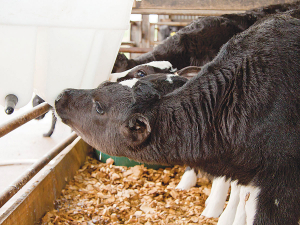Achieving the best calving season requires good planning and preparation, says DairyNZ. Here's how to do just that.
Help your farm team set up early for a smoother calving season. Best to have a pre-calving checklist of supplies of metabolics, electrolytes, navel spray, etc on hand or ordered.
Update new staff on farm policies and what to expect during calving.
Clean and disinfect calf trailers, calf sheds and feeding gear. All sheds must have a designated sick calf area.
A well-stocked calving kit will save lots of trudging between the paddock and the shed. Keep your calving kit at the gate of the springer paddock. Have it restocked regularly by an agreed person.
As calves are born, record the date, cow number, sex of the calf, calf number, if the birth was assisted and if the calf is at risk.
Seperate the calf and mother from the mob, keeping the calf between you and its mother. Treat the navel with iodine, making sure the entire navel is covered.
Keep people safe during calving. And look after yourself, DairyNZ says.
“When lifting a calf, bend your knees and keep your back straight. If it is too heavy, get help.
“Be careful of cows after they have calved. Cows can be very protective of their calves and unpredictable.
“Always keep the calf between you and its mother. Don’t turn your back on a freshly calved cow. Don’t take children or dogs with you when picking up calves.”
When bringing calves from the paddock to the shed, handle them gently: “They are babies.”
“Don’t overload the transport. All calves must be able to stand up and lie down easily.
“Be careful on slopes. Calves move around easily: go slow, no faster than walking pace to keep cow/calf contact.”
When you get to the shed, treat the calf’s navel with iodine again.
Feeding colostrum
• Calves should drink 4-6L of fresh colostrum during the first 12 hours of life to get protective antibodies. To achieve this, pick up calves twice a day and give them gold colostrum as soon as possible.
• You can test the level of antibodies in a batch of colostrum using a Brix refractometer, available from your vet, farm supply store or a home brew shop. Brix higher than 22% is best for newborns.
• Gold colostrum is best fed fresh but may be frozen for up to six months. Thaw/heat in warm water, do not microwave.
• Store colostrum in a lidded drum or vat and stir regularly. Colostrum should be refrigerated (at 4°C) or preserved using a chemical preservative such as potassium sorbate.
Health, hygiene
• Scrub all feeding gear well with hot water and detergent
• Remove sick calves promptly to a designated sick pen
• Frequently clean and disinfect pens where sick calves are treated
• Disinfect hard surfaces
• Regularly refresh all bedding
• Prevent disease from spreading by minimising movement between pens. Calves of the same age should stay in the same pen. However, small or unthrifty calves may be better off with a healthy younger group
• Vaccinate, treat for parasites and provide access to shelter.
Make regular checks
Calves must be checked twice daily for signs of ill-health and treatment given when needed. Check that:
• Noses are clear of discharge and are moist and cool
• Calves are alert and have responsive ears with no infection around the ear tag
• Navels are clear of infection
• Mouths are clear of ulcers
• Calves can stand and walk normally, i.e. no joint illness
• All calves are feeding
• Calves have shiny, supple coats.
If you lightly pinch a calf’s skin and it is slow to return to normal it may be dehydrated and need electrolytes immediately.


















